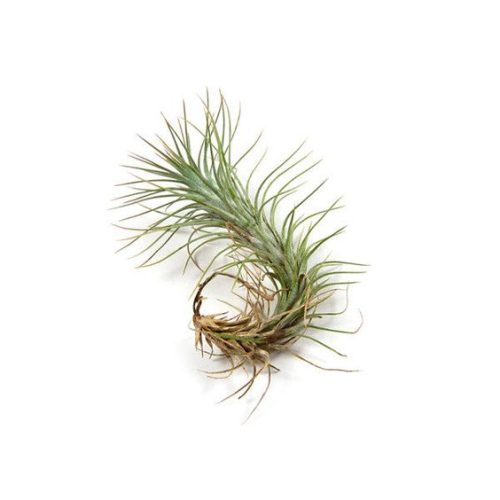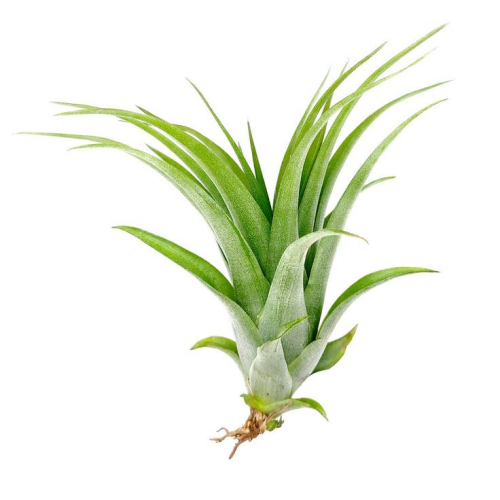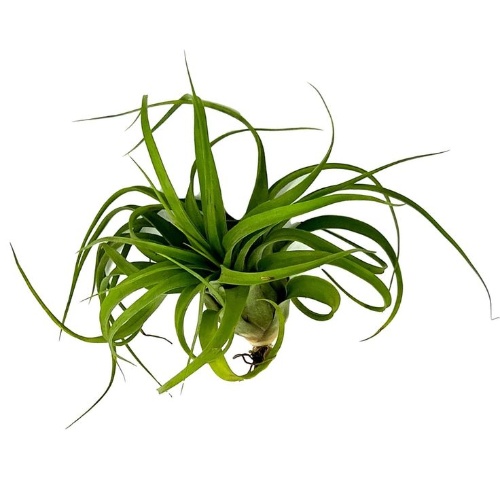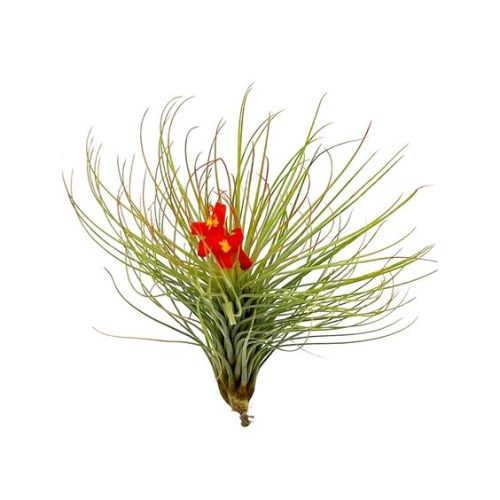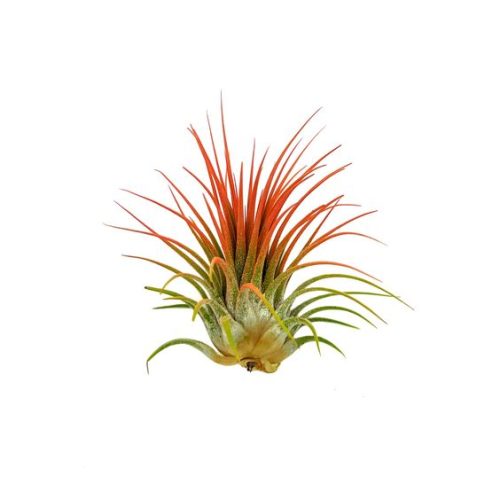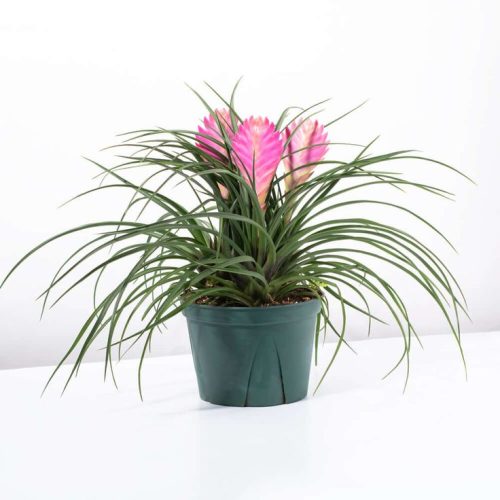Tillandsia Bulbosa
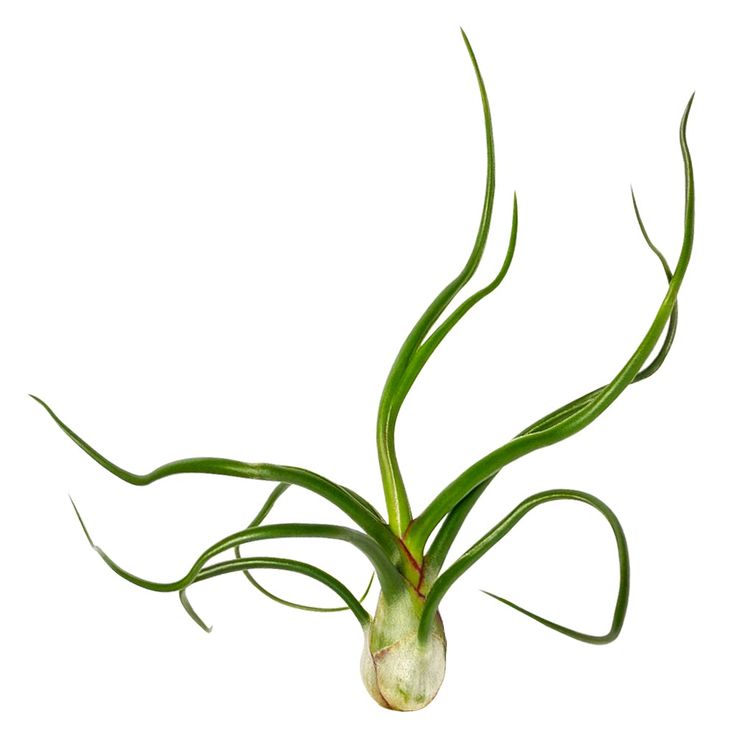
- Botanical Name: Tillandsia bulbosa
- Family Name: Bromeliaceae
- Stems: 1-4 Inch
- Temperature: 5°C~40°C
- Others: Drought-resistant, sun-loving.
Overview
Product Description
Tillandsia Bulbosa: Air Plant Supremecy
Light and Water Management
Tillandsia Bulbosa, this resilient air plant, requires bright, indirect light to maintain its growth, avoiding direct sunlight exposure. Their water needs are closely related to the climate of their origin; in dry indoor environments, regular watering through misting or soaking is essential to keep the plant vibrant. Generally, watering is required every two to three days or once a week, depending on environmental humidity and plant response.

Tillandsia Bulbosa
Fertilization Strategy
For Tillandsia Bulbosa, moderate fertilization can promote healthier growth and blooming. It is recommended to use a quarter-strength balanced water-soluble fertilizer every two months to prevent damage from over-fertilization. Monthly fertilization during the growing season helps enhance the plant’s overall vitality.
Pruning and Maintenance
Spring is the optimal time for pruning Tillandsia Bulbosa, removing dead leaves to encourage new growth and maintain good ventilation. Be cautious during pruning, limiting it to one-third of the plant each time to avoid causing excessive stress.
Temperature Control and Propagation
Tillandsia Bulbosa can tolerate a wide range of temperatures, from 5°C to 40°C, with an optimal growth temperature of 25°C. In the cold winter months, move the plant indoors to prevent frost damage. For propagation, division is the way, carefully separating seedlings about one-third the size of the parent plant and ensuring the roots are intact. Place the separated seedlings in bright, indirect light and maintain good air circulation to aid in the growth and development of the new plant’s root system.
The Quirky Charms of Tillandsia Bulbosa: From Pitchers to Spirals
Pitcher-shaped leaf base and tubular leaves
One of the most notable morphological features of Tillandsia Bulbosa is the base of its leaves that clasp together to form a pitcher-like structure, which not only adds to the plant’s ornamental value but also aids in the collection and retention of water. Additionally, its leaves are slightly concave and tubular, further enhancing its water storage capacity. These two characteristics together make Tillandsia Bulbosa stand out among air plants.
Flower color changes and pseudobulb
During the flowering period, it exhibits distinct color changes in its heart leaves and produces tubular purple flowers, which is a significant characteristic of its reproduction. Moreover, this plant also has a pseudobulb, which is a notable feature that distinguishes it from other bromeliads. The presence of the pseudobulb makes Tillandsia Bulbosa even more unique and easily identifiable.
Leaf arrangement
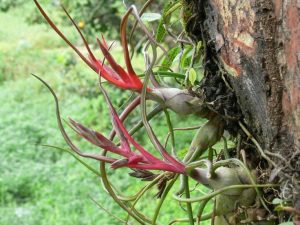
Tillandsia Bulbosa
The leaves of Tillandsia Bulbosa are arranged in a spiral pattern, creating a distinctive appearance. This arrangement is not only aesthetically pleasing but also helps the plant more effectively absorb sunlight and moisture from the air. The spiral arrangement of the leaves, combined with its unique morphological features, makes Tillandsia Bulbosa a very popular and easily recognizable variety among air plants.
The Low-Maintenance and Air-Purifying Qualities of Air Plants
Tillandsia Bulbosa, known as an air plant, is perfectly suited for indoor cultivation. They require minimal watering and are virtually maintenance-free, making them ideal for the pace of modern life. Moreover, air plants have the ability to absorb harmful substances from the air, helping to purify indoor air and bring a fresh breath to homes or office spaces. Not only are they easy to care for, but they also enhance the air quality of the space, making them an ideal choice for indoor plants.
The Decorative Value of Air Plants
Air plants add a splash of natural beauty to indoor decor with their diverse shapes and rich colors. They can adapt to various environmental conditions, including light and temperature changes, making them suitable for any spot indoors. Additionally, since air plants do not require soil, they can be displayed in a variety of creative ways, such as hanging or placing them in decorative containers, adding endless possibilities to indoor decoration. The ease of propagation also makes air plants a source of joy for the home.





